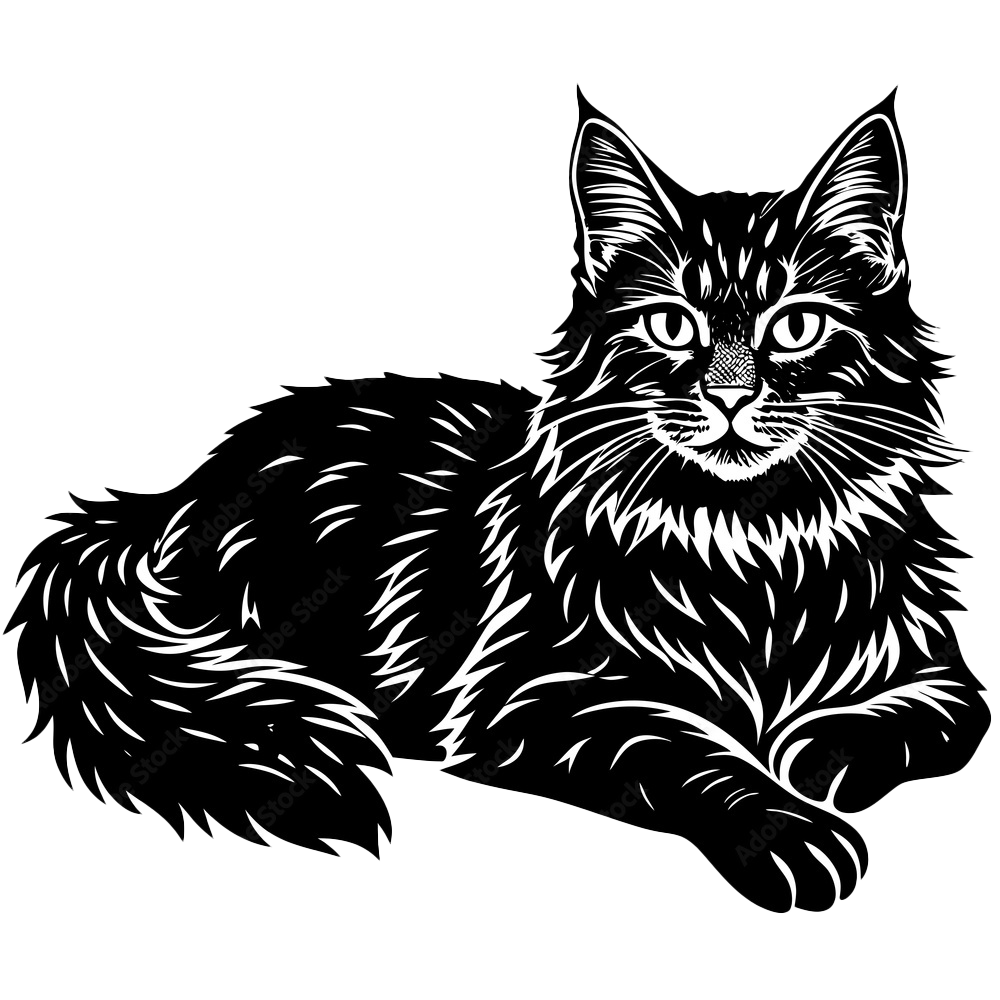Breed History
The Maine Coon is one of the oldest and most fascinating natural cat breeds in North America, with a rich history shrouded in legend and folklore. Here’s a detailed look at its origins and development:
1. Origins: Myths & Legends
Maine Coons have several colorful (but unlikely) origin stories:
Viking Cats? Some believe they descended from longhaired cats brought by Norse explorers (like Leif Erikson) around 1000 AD.
Marie Antoinette’s Cats? A tale claims the doomed queen sent her Turkish Angora cats to America during the French Revolution, where they bred with local cats.
Raccoon Hybrid? The myth that Maine Coons resulted from cats mating with raccoons (biologically impossible, but their bushy tails and tabby coats fueled the idea).
The most plausible theory is that they evolved from longhaired cats (possibly brought by European sailors in the 1700s–1800s) breeding with local shorthaired cats in New England.
2. Natural Evolution in Harsh Climates
Adaptation to Winter: Their water-resistant fur, tufted paws, and thick tails (used like a scarf) helped them survive harsh Maine winters.
Skilled Hunters: Farmers and sailors valued them for controlling rodents on ships and in barns.
3. Rise to Fame in the 1800s
First Cat Shows: Maine Coons were stars at early U.S. cat shows in the late 1800s. A brown tabby named “Cosey” won Best in Show at the 1895 Madison Square Garden Cat Show.
Decline: When Persian and Siamese cats became fashionable in the early 1900s, Maine Coons nearly vanished.
4. Revival & Official Recognition
1950s–1970s: Breed enthusiasts formed clubs (like the Maine Coon Breeders & Fanciers Association) to preserve the breed.
1976: The Cat Fanciers’ Association (CFA) granted Maine Coons championship status.
1985: Maine Coons became the official state cat of Maine.
5. Modern Popularity
Today, Maine Coons are one of the most popular breeds worldwide, known for their size, intelligence, and friendly nature.
They hold records for longest domestic cat (Stewie, at 48.5 inches) and tallest cat (Arcturus, at 19.05 inches).
Key Traits Rooted in History
| Feature | Historical Purpose |
|---|---|
| Tufted ears | Protection from cold/snow |
| Large, tufted paws | “Snowshoes” for winter |
| Long, bushy tail | Warmth (wrapped around body) |
| Water-resistant coat | Survival in wet climates |
